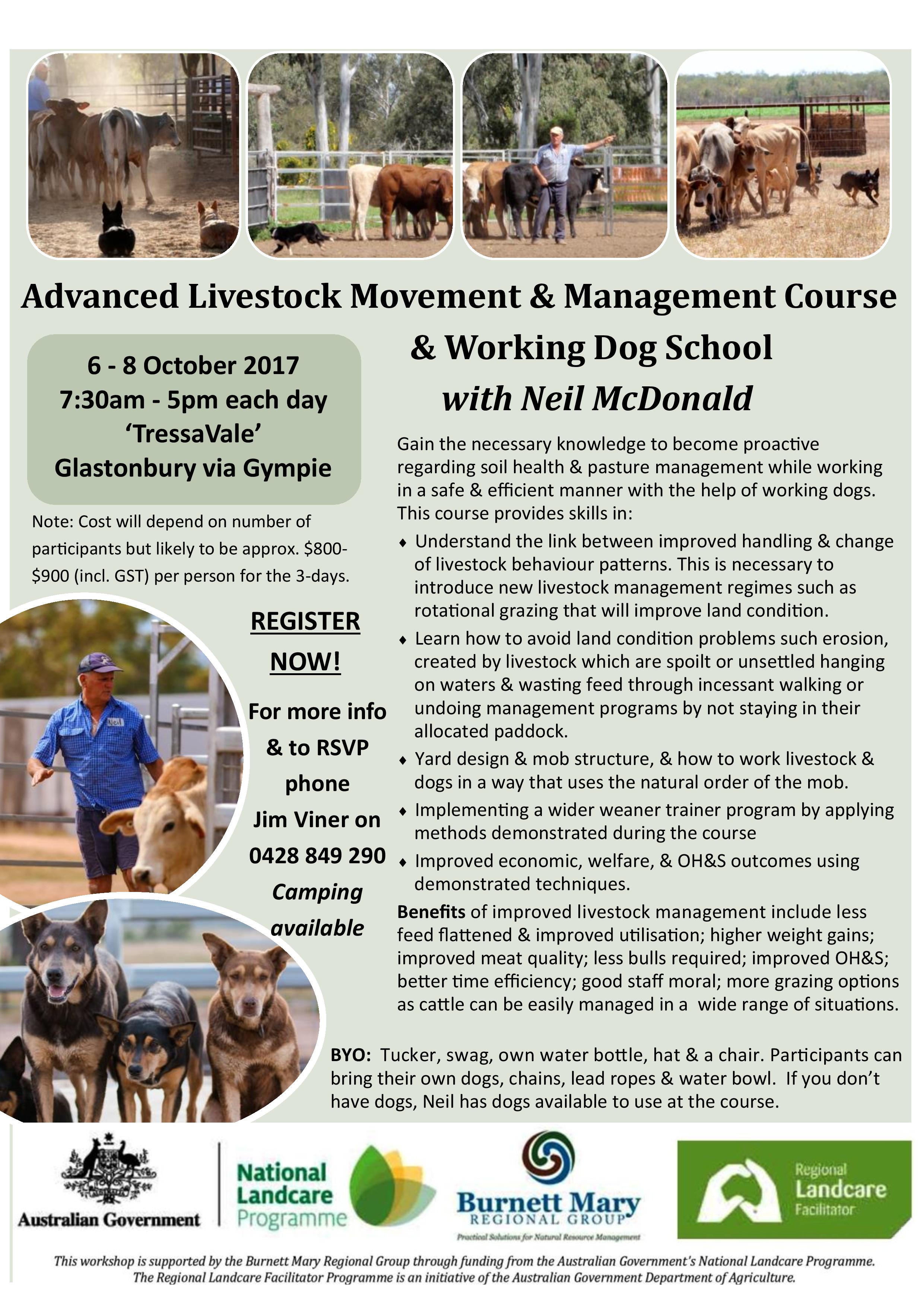
- This event has passed.
Neil McDonald Advanced Livestock Movement and Management Course and Working Dog School
| Start: | Friday 6 October 2017 @ 7:30am |
|---|---|
| End: | Sunday 8 October 2017 @ 5:00pm | Event category: | Animal welfare and handling, Land and pastures, Past event, People and business |
| Website: | http://www.bmrg.org.au/news-and-events/2013-events/advanced-livestock-movement-management-dog-handling-course/?eID=1246 |
| Venue |
Tressavale
337 Portas Rd
Upper Glastonbury, Qld 4570 Australia |

Advanced Livestock Movement and Management Course and Working Dog School with Neil McDonald.
6-8 October 2017 at ‘Tressavale’, Glastonbury via Gympie.
The course will provide skills in:
- Understanding the link between improved handling and change of livestock behaviour patterns – necessary to introduce new livestock management regimes such as rotational grazing that will improve land condition.
- Learning how to avoid land condition problems such erosion, created by livestock which are spoilt or unsettled hanging on waters and wasting feed through incessant walking or undoing management programs by not staying in their allocated paddock.
- Yard design and mob structure, and how to work livestock and dogs in a way that uses the natural order of the mob.
- Stock handling topics covered include how to start, stop and create a good steady flow of livestock; pressure and relief; anticipating the moves of animals; your position in relation to the mob; understanding the distance you need to work stock from; the path you walk; the way a person’s demeanour and body language effects livestock; the angles of a person’s feet and head; weaner training; and, how to work livestock in a fashion to get a job done and have the cattle remain co-operative next time you work them.
- Implementing a wider weaner trainer program by applying methods demonstrated during the course
- Benefits of improved livestock management include less feed flattened and improved utilisation; higher weight gains; improved meat quality; less bulls required; improved OH&S; better time efficiency; good staff moral; more grazing options as cattle can be easily managed in a wide range of situations.